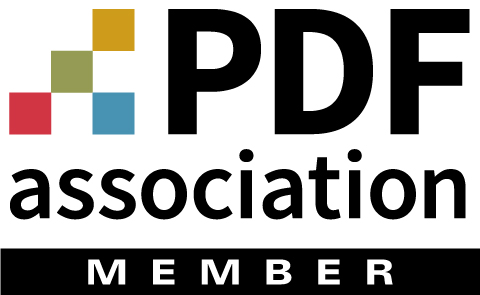Form design has been my passion for years. Since 1983, when I ended up at the layout group PTT Bedrijfsstijl forms after my military service, my passion for forms began and has not gone away since then. Read more about the history of my passion.
Accessible forms:
it starts with a basic design.
Creating accessible forms is crucial and for the forms architect for years ‘business-as-usual‘, I design websites, forms and document templates (whether they are web or PDF forms or PDF documents) with accessibility in mind and with confidence. My approach is simple, clear and straightforward and ensures that everyone has direct access to information. A form is a means to increase the interaction between user and client and is the basis for a smart website.
As a forms architect, I believe that accessibility is not only a requirement, but also a responsibility and awareness of every website owner.
I take pride in ensuring that my clients’ forms are inclusive and welcoming to all users. With my expertise, I ensure that my clients’ websites, forms and documents meet accessibility standards and regulations with confidence and ease.
Basic design webforms
Start with a good accessible design and read my instruction on my GitHub and read the information for a smart and accessible basic design.
Basicdesign webforms
Heading of the form
- In the header of the form the logo with skiplink
- The form name, preferably the H1 tag if it is a stand-alone html page, otherwise an H2 tag if it is embedded in an html page.
- a short instruction of maximum 5 lines.
- a section NAW or user data, so who is filling in the form
- The header also contains the components to fill in who the form comes from.
- a navigation (bookmarks), the steps in the process, preferably horizontal.
- Section header is always the H2 tag with attribute and bookmarks to create a navigation in the form. This is useful for a multi-step form.
Body- of form part
<h2>Sectiekopje</h2>
<h3>Secties binnen een formulier</h3> /*of label voor een formuliercomponent*/Note: H3 within the h2 section.
This section contains the actual form with the questions.
This includes intermediate sections with the H4 tag where conditional content is usually located.
Footer part
The footer is explicitly for the initials route, signature and/or instructions for shipping.
New Choice for WordPress Template in 2025
In 2025 I will be completely in love with the Greyd Suite with 100% accessible and smart web forms. Put it to the test and fill in the contact form.
Basicdesign pdf forms
- Basic design, header, body and footer with navigation
- Object styles for form fields
- Add articles and export labels
- Layer-based design
- This is the basis for exporting to Adobe Acrobat Pro
Basic functionalities for both web and PDF forms
Digital forms and PDFs should be made accessible to everyone, including people with disabilities. This ensures that everyone can easily use online resources. People with visual, hearing, or cognitive impairments can benefit from accessible forms. Accessible digital forms should be easy to understand, easy to fill out, and work with different input methods and tools. PDF documents should be designed with accessibility in mind.
Functionalities
- Smart input, only show what is relevant for the function in question.
- Add or delete extra lines.
- Minimize white space to save paper when printing the form.
- Save, print and send button and optional data export.
- Only print completed fields.
- Digital signature and sending by e-mail
- Usually to be filled in as few steps as possible, preferably 3 steps
- Explanation only where it is really necessary.
Building a form is application independent and is designed by default according to the form standards, WCAG 2.1, ISO 14289-1 and PDF-UA. In addition, each form has the semantic style. View the source code of a semantic form here.
PDF Forms can always be used with the latest Adobe Reader DC version.
Examples of some smart and recent forms
Below relevant examples substantiate my years of expertise in building smart forms and smart websites represent. It is not only these big cases but I have also – see my smart cv portfolio – the various websites for small businesses, such as starters and various interactive pdf or html 5 webforms for small and large businesses.
Do you still work with Word forms?
Do you have a Word document with form fields? Then don’t bother. Stop and let me do the work in InDesign. From my own experience and that of others, I know how you have to struggle with Word to create a complex form in Word. So don’t do it.
My experience from 1983
SKILLS
UX/UI design, UX/UI research, html 5, CSS, WCAG Axure, Sketch, Figma, Adobe XD, Photoshop, InDesign, Illustrator, XML/XSLT, SOAP and REST APIs WordPress, Drupal, DTP in the broadest sense of the word and accessible. Accessible Pdf documents. Agile, Scrum, Kanban, mark up documentation tools. C#, Xamarin, MS Office Professional (all packages), InfoPath, SharePoint/ Office 365 from 2003, Adobe LiveCycle, Nintex, PowerApps, Power Automate. Certificate Mendix Rapid Developer, Mendix Intermediate, TriplEforms, KIM, Resolve, Kotuur, BPMN 2.0, Axure RP, Archimate, Cobol
LANGUAGES
English | English | German | French | Spanish | Clean Language training * | B1
Learn more about Clean Language
COMPETENCES
Analytical | Innovative | Creative | Enterprising | Result-oriented | Customer-oriented |Decisive |Team player | Guiding and motivating | Environmentally-aware and mediator |Business/process-based
CERTIFICATION
Certificate Create accessible PDFs, Certificate Advanced accessible PDFs, Certificate Cobol programming with Visual Code, Masterclass Mendix Intermediate, Masterclass BPMN 2.0, Masterclass Cloud Essentials, Angular 5, Mendix web and desktop modeler | Rapid developer, Studying for React.js, Vue.js, TriplEforms, basic training developing forms, Masterclass Clean Language, Training social internship, for volunteer organizations, Xamarin Forms, Agile Scrum Basis and masterclasses, Responsive design/ html 5 css3, Asp.net MVC 3 platform, Visual Studio, Prince 2, Jquery, C# and mobile apps, Certified pdf, Masterclass Web administrator and color management, Adobe Creative Suite Design Premium, from CS2, 3 and 4 and CC to Creative Cloud.
My vision is and stays
A smart accessible form requires no explanation and is platform independent.
View my portfolio forms here: (I am only allowed to share real examples face-to-face, due to confidentiality)
Download my resume here.
Do you want your forms to also comply with the standards?
Bring your forms to the highest level!

